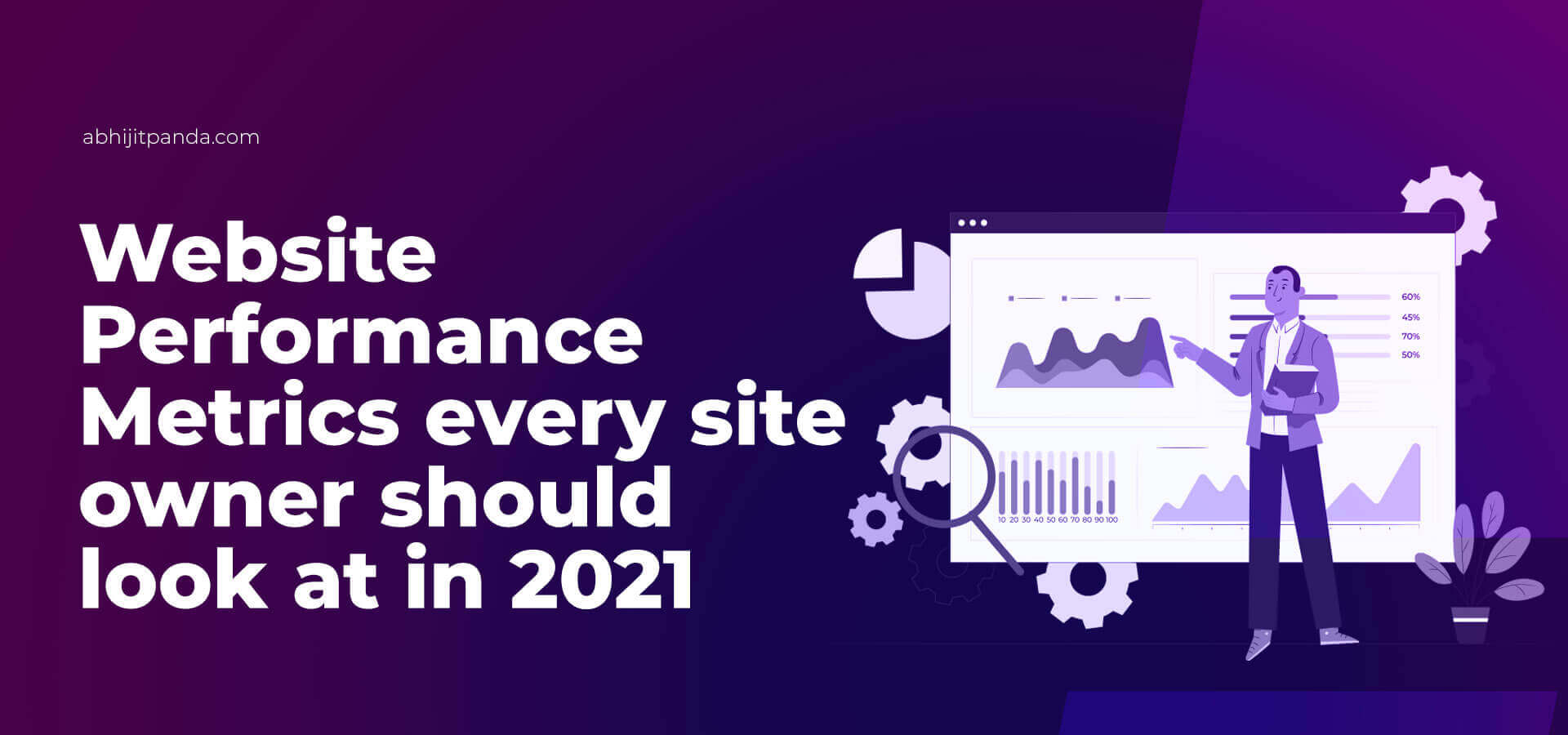 Website Performance Metrics Every Site Owner Should Look at in 2023
Website Performance Metrics Every Site Owner Should Look at in 2023
Businesses use websites as a powerful tool to accomplish a slew of goals – generate leads, drive sales, and automate customer service delivery. But no business can accomplish the predefined business objectives without delivering a superior user experience continuously. The user experience delivered by a website is directly impacted by its accessibility, usability, functionality, performance, and security.
Hence, the user experience of a website varies from time to time. The smarter website owners and webmasters measure and finetune the performance of their websites to engage visitors and enhance brand reputation. They measure and evaluate the performance of the website using a wide variety of metrics or key performance indicators (KPIs).
These website performance metrics help owners assess the strengths and shortcomings of their websites. Also, the website owner can use the metrics to compare his website’s performance with competitors. But they need to use multiple metrics in 2023 to measure the overall performance of a website accurately.
Website Performance Metrics to Measure a Website’s Performance Accurately in 2023
Number of Unique Visitors
The size of traffic or number of visitors depicts the performance of a website clearly. The website owners use cookies to track individual website visitors based on their IP addresses. They can use the number of unique visitors as one of the website performance metrics to monitor the fluctuations in website traffic. For instance, the number of unique visitors increases when a business launched new products or runs promotional campaigns. Also, the number of unique visitors decreases during specific months. A business has to focus on increasing the number of unique visitors consistently by running content marketing campaigns.
Bounce Rate
According to Wikipedia,
“Bounce rate is an Internet marketing term used in web traffic analysis. It represents the percentage of visitors who enter the site and then leave (“bounce”) rather than continuing to view other pages within the same site.”
The website bounce rates vary across industries. For instance, retail websites have a higher bounce rate than FAQ sites or self-service sites. That is why; a website owner must keep in mind the industry while measuring a website’s performance based on bounce rate. However, it is always important for website owners to convey the desired information or message to visitors by reducing the bouncing rate. They can reduce bounce rate by focusing on a slew of factors – reducing page load time, improving content quality, simplifying navigation, and boosting user experience.
Session Duration
No business can generate leads or drive sales without keeping visitors engaged. A website owner can assess his website’s effectiveness in keeping visitors engaged by using session duration as a key metric. As its name suggests, session duration depicts the amount of time a visitor was active on the website. However, the webmasters understand that a visitor may not interact with the website or take the desired action despite a longer session duration. Hence, they use session duration along with other website performance metrics to evaluate use engagement reliably.
Average Page Views per Session
The website owners can engage and influence visitors only when they browse multiple web pages during each visit. The average page views per session is a metric that helps owners to measure the average number of web pages a visitor accessed during a single session. For instance, a higher average of page views per session indicates that a visitor is browsing more products on an e-commerce website. At the same time, a lower average page view makes it essential for webmasters to impress and engage visitors by publishing compelling content. However, a visitor may not take the desired action despite accessing more web pages during a visit.
Average Time on Page
The performance of individual web pages on the same website differs. This website performance metric helps website owners to measure the performance of individual web pages. It measures the performance of every web page based on the amount of time a visitor spends on specific web pages. The information helps webmasters to identify the web pages that keep visitors engaged. For instance, the owners of retain site can know if landing pages are more effective than product pages in engaging visitors based on the average time on the page. Likewise, the owners can use the metric to compare different forms of digital content – blogs, videos, and infographics.
Interactions per Visit
The visitors these days interact with websites by taking a variety of actions – clicking, buying, liking, sharing, subscribing, downloading, and commenting. But they interact with a website using different options – buttons, links, and interactive elements. The owners can keep website visitors engaged by identifying what makes them interact with the website. Interaction per visit is one of the simple metrics that help website owners compare different parts or sections of a website. The information helps website owners to optimize the performance of various parts of the website. Also, they can leverage the information to boost the performance of digital marketing campaigns.
Onsite Search Queries
Most visitors gather information about various products and services using the custom search feature embedded in the website. The tools provided by popular search engines make it easier for website owners to implement custom search functionality. But business owners cannot understand the needs, expectations, and experiences of visitors without tracking and analyzing the search queries used by them. The onsite search queries help businesses to assess the content quality and identify user experience issues. Also, website owners can use the metric to boost the performance of SEO and content marketing campaigns.
Goals Accomplished
Every web page on a website is designed with the aim to accomplish a specific goal. Some web pages influence visitors’ purchase decisions by providing relevant information, while others persuade visitors to take specific actions like view, click, share, and buy. It is always important for a website owner to check if the web page is persuading visitors to take the desired action. Also, they must finetune the web page to persuade visitors to take the desired action. The website owners measure the performance of individual web pages using this website performance metric. The metric helps them to boost the performance of other web pages by replicating content and elements.
Conversion Rate
Conversion rate is one of the most important website performance metrics. The website owners use the metric to check if the website is effective in accomplishing predefined sales and marketing goals. The conversion rate depicts if the website is persuading visitors to take the desired actions – share contact information, make inquiries, or place orders. If the conversion rate is low, the website owners have to identify the issues or factors that prevent visitors from taking the desired action. However, they must focus on increasing the conversion rate consistently by optimizing the website’s performance and user experience.
Landing Page Conversion Rate
The landing pages are not linked or connected to other pages on the website. But they help businesses to run various marketing and advertisement campaigns. The visitor always lands on the landing page directly by clicking on an ad, link, or email. Hence, the quality of the landing page impacts a website’s effectiveness in generating leads and increasing sales directly. The landing page conversion rate is a metric that helps website owners to check the percentage of visitors becoming leads or customers after landing on the landing page. Website owners can boost conversion rates by implementing a slew of landing page best practices.
Cost of Conversion
No business owner can calculate return on investment (ROI) without measuring the cost of conversion. They have to use the cost of conversion as a key metric to measure the time, effort, and resources required to convert a website visitor into a lead or customer. Businesses can get higher ROI by reducing the overall cost of conversion regularly. At the same time, they can use the cost of conversion as a KPI to measure the performance of digital marketing campaigns launched by the business to generate leads and drive sales conversions.
Traffic Source
Most businesses these days get website visitors by running multiple digital marketing campaigns – search engine optimization (SEO), social media marketing, and pay-per-click (PPC) advertisement. That is why; they need to identify the channels or mediums that drive visitors to a website. The traffic sources of a website can be divided into multiple categories – direct, organic, search, social media, email marketing, referrals, and paid. In addition to identifying the important sources of website traffic, the website performance metric helps website owners to use other KPIs like average session duration and average page views more effectively.
Device Source
Users these days access the same website using different devices, operating systems, and browsers. For instance, a user can access the website using a desktop, laptop, smartphone, or tablet. Also, she can access the website on Google Chrome, Mozilla Firefox, Safari, or Microsoft Edge. An owner cannot optimize the website’s user experience without understanding the devices, operating systems, and browsers used by a large percentage of website visitors. The device sources will help him to evaluate the website’s user experience by performing elaborate testing. Also, website owners can serve more engaging ads to prospects and customers according to their preferred devices and browsers.
Page Load Time
According to Entrepreneur.com,
“Typical consumers expect your website to load in less than two seconds, and they will leave your site if it doesn’t.”
Also, search engines use page speed or page load time as a key signal while ranking websites. Hence, page load time is one of the website performance metrics that affect a website’s user experience and search engine performance. In addition to monitoring page load time regularly, website owners must focus on decreasing web page load time by focusing on a slew of factors.
Mobile Responsiveness
According to Statista.com,
“In the third quarter of 2020, mobile devices (excluding tablets) generated 50.81% of global website traffic, consistently hovering around the 50% mark since the beginning of 2017.”
The percentage of people accessing websites on their mobile devices will increase steadily in 2023. Hence, website owners must use mobile responsiveness as a key metric to evaluate website performance. They need to perform elaborate testing to ensure that users can access the website seamlessly on computers and mobile devices. But they have to engage and retain visitors by boosting the website’s mobile user experience.
Exit Pages
Most websites generate leads and drive sales through a series of steps. For instance, they request visitors to become subscribers once they read articles or blogs. Likewise, a website visitor can compare and evaluate many products before placing an order. But often visitors abandon a website when the process is lengthy or complex. The website owners can retain visitors only by understanding why they leave the websites. Exit pages help website owners to identify the section or web pages where the visitors are abandoning the website. Webmasters can prevent visitor abandonment by changing and improving the exit pages.
The performance of a website varies from time to time based on a variety of factors. The website performance metrics help website owners to measure and optimize their websites’ performance and user experience. But the website owners must choose and combine the appropriate website performance metrics according to goals set for every web page.









Leave a Reply